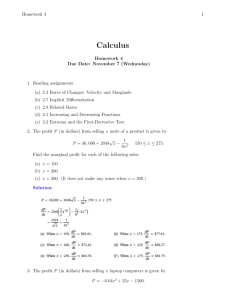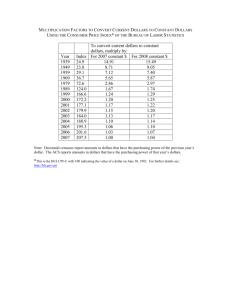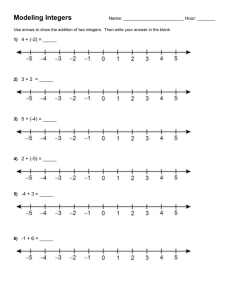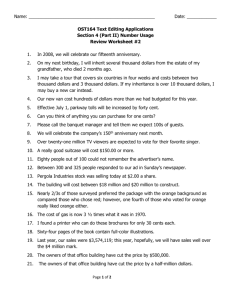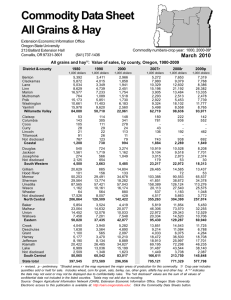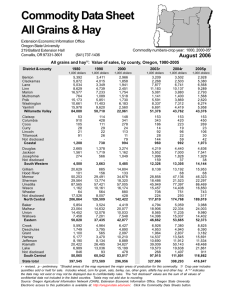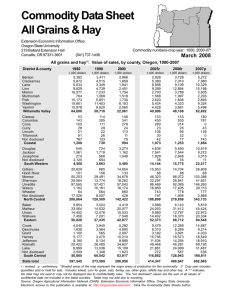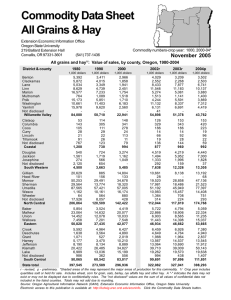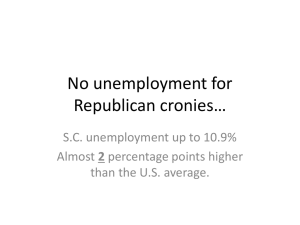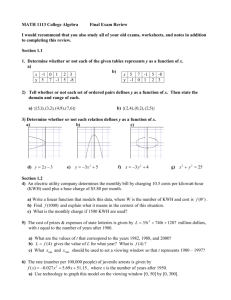Percentage Change and Percentage Point Change
advertisement
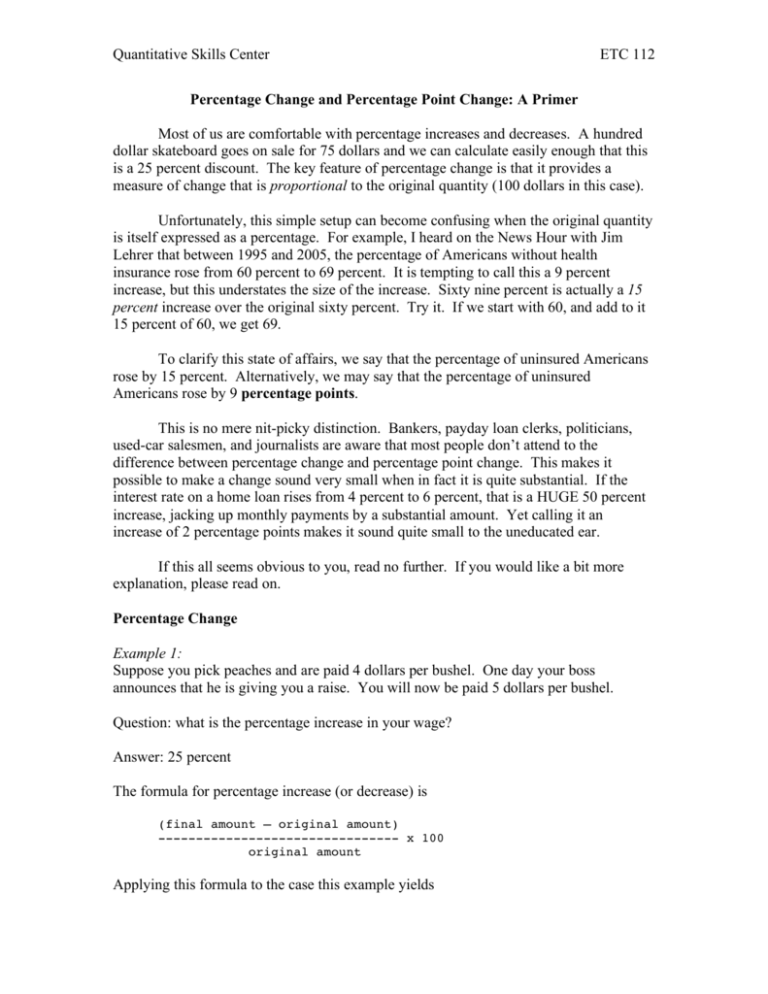
Quantitative Skills Center ETC 112 Percentage Change and Percentage Point Change: A Primer Most of us are comfortable with percentage increases and decreases. A hundred dollar skateboard goes on sale for 75 dollars and we can calculate easily enough that this is a 25 percent discount. The key feature of percentage change is that it provides a measure of change that is proportional to the original quantity (100 dollars in this case). Unfortunately, this simple setup can become confusing when the original quantity is itself expressed as a percentage. For example, I heard on the News Hour with Jim Lehrer that between 1995 and 2005, the percentage of Americans without health insurance rose from 60 percent to 69 percent. It is tempting to call this a 9 percent increase, but this understates the size of the increase. Sixty nine percent is actually a 15 percent increase over the original sixty percent. Try it. If we start with 60, and add to it 15 percent of 60, we get 69. To clarify this state of affairs, we say that the percentage of uninsured Americans rose by 15 percent. Alternatively, we may say that the percentage of uninsured Americans rose by 9 percentage points. This is no mere nit-picky distinction. Bankers, payday loan clerks, politicians, used-car salesmen, and journalists are aware that most people don’t attend to the difference between percentage change and percentage point change. This makes it possible to make a change sound very small when in fact it is quite substantial. If the interest rate on a home loan rises from 4 percent to 6 percent, that is a HUGE 50 percent increase, jacking up monthly payments by a substantial amount. Yet calling it an increase of 2 percentage points makes it sound quite small to the uneducated ear. If this all seems obvious to you, read no further. If you would like a bit more explanation, please read on. Percentage Change Example 1: Suppose you pick peaches and are paid 4 dollars per bushel. One day your boss announces that he is giving you a raise. You will now be paid 5 dollars per bushel. Question: what is the percentage increase in your wage? Answer: 25 percent The formula for percentage increase (or decrease) is (final amount – original amount) -------------------------------- x 100 original amount Applying this formula to the case this example yields Quantitative Skills Center ETC 112 (5 dollars – 4 dollars) ----------------------- x 100 4 dollars which yields 1 ----- x 100 4 or 25% This is a percentage increase of 25 percent. Distinguishing between percentage changes and percentage point changes In Example 1 we were dealing with a percentage change of a quantity expressed in dollars; however, there are times when we want to talk about a percentage change in a quantity already expressed as a percentage, such as the unemployment rate, or an interest rate. The fact that the original quantity is expressed as a percentage introduces an ambiguity. Consider the following example. Example 2: Suppose you have a student loan with an annual interest rate of 4 percent. One day your lender announces that the interest rate will soon increase to an annual rate of 5 percent. Here is a question: what is the percentage increase in your interest rate? Unfortunately, this question is a bit ambiguous. The simple answer seems to be that the interest rate increases by 1 percent (which is 5 percent minus 4 percent). Yet if you think about it a little further, it would be very misleading to call this a 1 percent increase. In fact, it is analogous to the case we discussed in Example 1. Recall that in Example 1, we found that an increase from 4 dollars per bushel to 5 dollars per bushel represented a 25 percent increase. Likewise, here we can say that an increase from 4 percent to 5 percent represents a 25 percent increase. To clear up the ambiguity, we erect a distinction between percentage point change and percentage change. The distinction runs as follows. The percentage point change is simply the difference between the final and initial values (using the example above, 5 percent minus 4 percent yields an increase of 1 percentage point). The percentage change is the difference between the final and initial values divided by the initial value (using the example above, we take the difference of 1 percent and divide it by 4 percent, which yields an increase of 25 percent).
